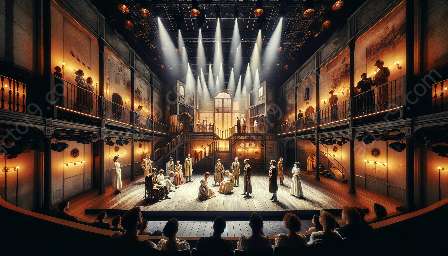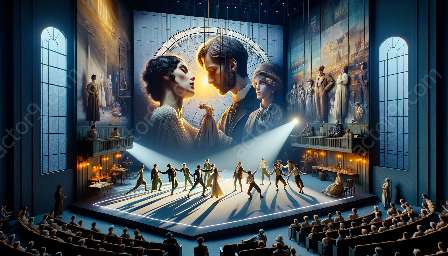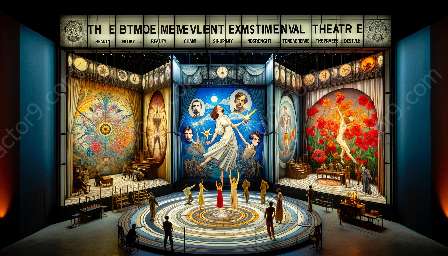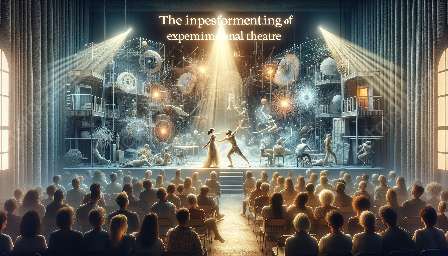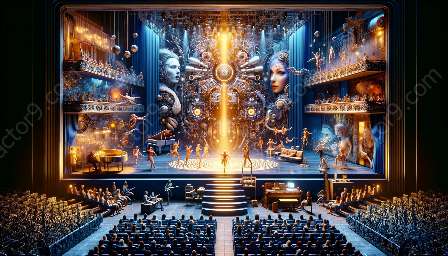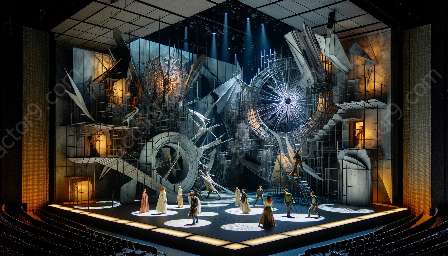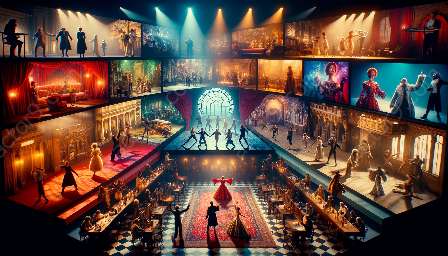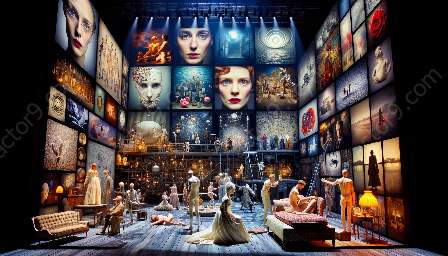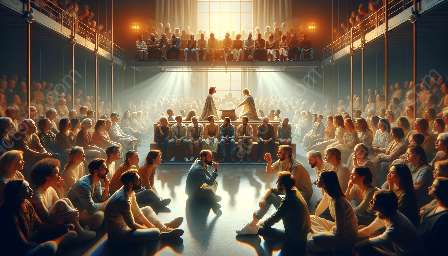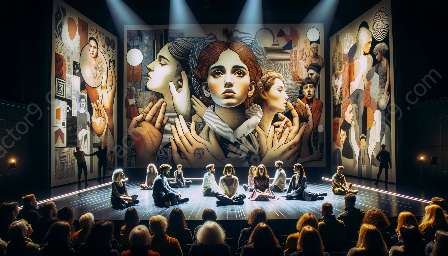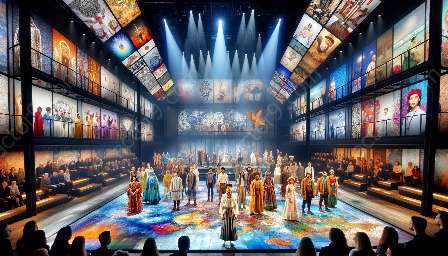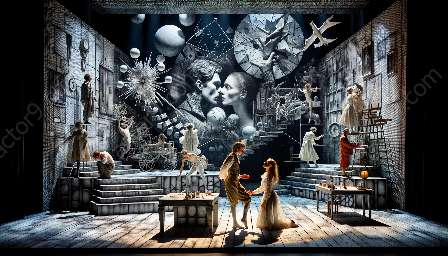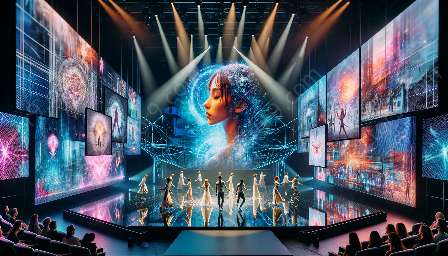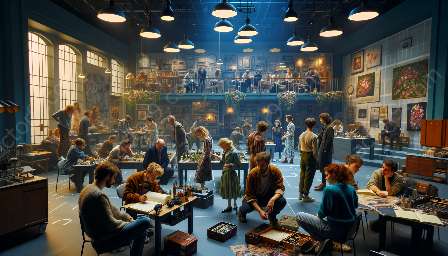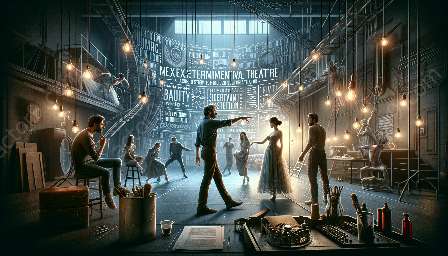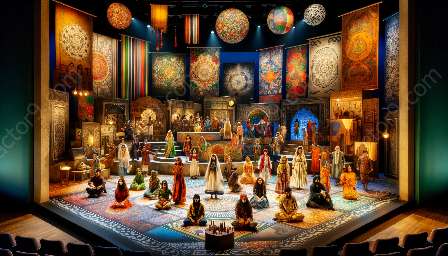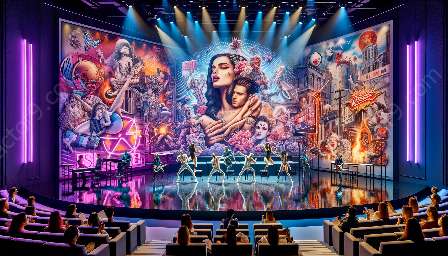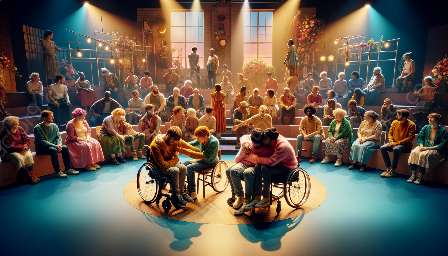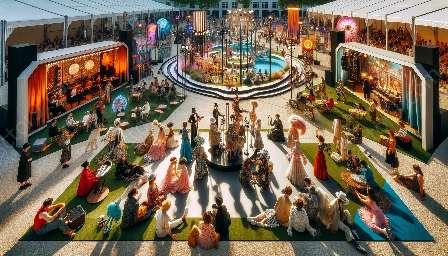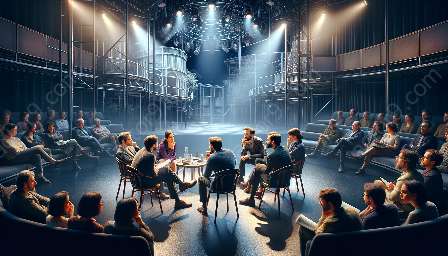Experimental theatre is a dynamic, innovative form of artistic expression that challenges traditional norms and boundaries. It frequently engages with the concept of presence and embodiment in intriguing and transformative ways. This topic cluster aims to explore the interplay between experimental theatre and the notions of presence and embodiment, delving into notable works and key techniques that contribute to the creation of a unique and immersive experience for audiences.
Understanding Presence and Embodiment
Presence and embodiment are central aspects of the human experience, serving as foundational elements in the way individuals perceive and interact with the world. In the context of experimental theatre, these concepts are often explored and manipulated to provoke thought, emotion, and reflection.
Presence in experimental theatre refers to the sense of being fully engaged and enveloped by the performance. It transcends mere observation, encouraging the audience to immerse themselves in the unfolding narrative and sensory experiences. By breaking down the barriers between performers and spectators, presence in experimental theatre cultivates an intimate and participatory connection that challenges traditional notions of theatrical space.
Embodiment involves the physical and emotional manifestation of ideas, characters, and narratives within the performers themselves. Experimental theatre often prioritizes the embodiment of concepts and emotions, blurring the lines between performer and performance. This deliberate blurring can lead to a heightened sense of empathy and connection between the audience and the stories being portrayed, creating a deeply impactful and visceral experience.
Notable Works in Experimental Theatre
Several notable works within the realm of experimental theatre exemplify the ways in which presence and embodiment are harnessed to captivate and engage audiences on a profound level. One such work is The Wooster Group's production of House/Lights, where the integration of multimedia elements and non-linear storytelling results in an immersive and disorienting experience. The use of live video feeds, fragmented narratives, and overlapping character portrayals challenges the audience's sense of presence and embodiment, actively involving them in the construction of the performance's meaning.
Another influential work is Robert Wilson's staging of Einstein on the Beach, which defies traditional theatrical conventions through its non-narrative structure and prolonged, repetitive sequences. This deliberate manipulation of time, space, and movement fosters a heightened awareness of presence and embodiment, compelling the audience to actively interpret and engage with the unfolding visual and sonic compositions.
The avant-garde masterpiece Marina Abramović's The Artist is Present presents a direct exploration of presence and embodiment through durational performance art. By inviting individual audience members to sit across from her in prolonged, unspoken encounters, Abramović creates a raw and unfiltered exchange that delves deep into the realms of presence and embodiment, challenging viewers to confront their own emotional and physical responses.
Key Techniques and Approaches
Experimental theatre employs a wide array of techniques and approaches to actively engage with the concepts of presence and embodiment. Such techniques may include:
- Site-Specific Performance: By taking the performance out of traditional venues and into unconventional spaces, experimental theatre can reshape the audience's relationship with the environment, enhancing the sense of presence and physical embodiment.
- Physical Theatre: Emphasizing movement, gesture, and non-verbal communication, physical theatre techniques amplify the corporeal presence of performers and foster a direct embodiment of concepts and emotions.
- Immersive Technologies: Incorporating virtual reality, augmented reality, or interactive installations, experimental theatre can extend the boundaries of presence and embodiment, enabling audiences to interact with the performance in unprecedented ways.
- Participatory Engagement: By directly involving audience members in the performance, whether through interactive elements or collective decision-making, experimental theatre blurs the line between spectator and performer, fostering a shared embodiment of the artistic experience.
The Transcendent Experience
At its core, experimental theatre is a potent vehicle for exploring and challenging the boundaries of presence and embodiment. It offers a platform for artists to push the limits of traditional performance practices, inviting audiences to actively participate in the co-creation of meaning and emotion. By dismantling preconceived notions of theatrical engagement, experimental theatre generates an unpredictable and transformative experience that transcends conventional storytelling, leaving a lasting impression on those who bear witness to its profound exploration of presence and embodiment.

